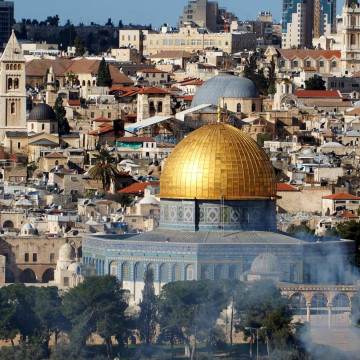Islamic - architectural style definition
The Islamic architectural style is a style that developed in Muslim countries from the 7th to the 15th centuries. It is characteristic of Muslim architecture and consists of various elements that are specific to Muslim culture.
One of the most important elements of the Islamic architectural style is the mosque. Mosques are places of prayer for Muslims and are usually built of bricks or stone. Inside the mosque there is usually a large space in which there is a place for worshipers to pray. The mezze, or place of prayer, is usually located opposite the entrance to the mosque, and in front of it is the minbar, or place where sermons are delivered.
Another important element of the Islamic architectural style are the minarets. Minarets are tall towers that are located next to mosques and serve as places for prayers. The minarets are usually very tall and decorated with various decorative motifs. Inside the minaret there is usually a staircase that leads to the top of the tower where the prayer is said.
The Islamic architectural style is also characterized by the presence of domes and arcades. Domes are extremely distinctive elements of Muslim architecture and are usually placed on top of buildings such as mosques or palaces. Arcades, on the other hand, are a type of columns that create extremely decorative elements of architecture.
The Islamic architectural style, also known as Muslim architecture, is a rich and diverse building tradition developed over the centuries in Muslim countries around the world. It includes both religious temples and secular buildings, characterized by a unique style and decorative elements. Here is information on the precursors, main features and some of the most famous buildings in the Islamic architectural style:
Precursors
The Islamic architectural tradition is mainly derived from two main sources: the classical architecture of ancient Rome and Byzantium, and the local building traditions of regions inhabited by Muslims. Early examples of this architecture were developed by the Arab Caliphate in the 7th and 8th centuries.
Main features
Geometric Patterns: The Islamic architectural style is often recognized by its use of geometric patterns such as stars, rhombuses, octagons and intricate trusses. These patterns are often used as decorative motifs on walls, ceilings, domes and minarets.
Minarets: A characteristic feature of Muslim religious architecture are minarets, tall towers from which the public call to prayer (adhan) takes place. Minarets are often decorated with galleries, arches and geometric decorations.
Domes: Domes are widely used in Muslim architecture, especially in mosques. The most famous Islamic-style domes are the dome on the Temple of the Treasury in Jerusalem and the dome over the Al-Haram Mosque in Mecca.
Inner courtyards: Many Muslim architects place great emphasis on inner courtyards (patios), which are the focal point of mosques, palaces and other structures. Courtyards are often surrounded by cloisters and decorated with fountains, gardens and beautiful mosaics.
The most popular buildings
Al-Haram Mosque in Mecca, Saudi Arabia: This is the most important mosque in Islam, containing the holy Kaaba. It is the largest mosque in the world, and its central dome is surrounded by many smaller minarets.
Al-Masjid an-Nabawi Mosque in Medina, Saudi Arabia: The mosque that contains the tomb of the Prophet Muhammad is one of the most important holy places for Muslims.
Alhambra in Granada, Spain: This is a 14th-century palace complex that combines elements of Muslim, Christian and Jewish architecture. The Alhambra is known for its beautiful gardens, courtyards, arches and decorated tiles.
The Great Mosque of Córdoba, Spain: This is one of the most important examples of Muslim architecture in Europe. The mosque is famous for its wide prayer hall with over a thousand columns and red and white arches.
Taj Mahal in Agra, India: Although not a mosque, the Taj Mahal is one of the most famous examples of Islamic architecture. This is the tomb built by Emperor Shah Jahan for his wife Mumtaz Mahal. Its distinctive feature is the white marble dome and ornate carvings.
These are just a few examples of the most popular buildings in the Islamic architectural style. There are many other structures around the world that represent this rich architectural tradition.















